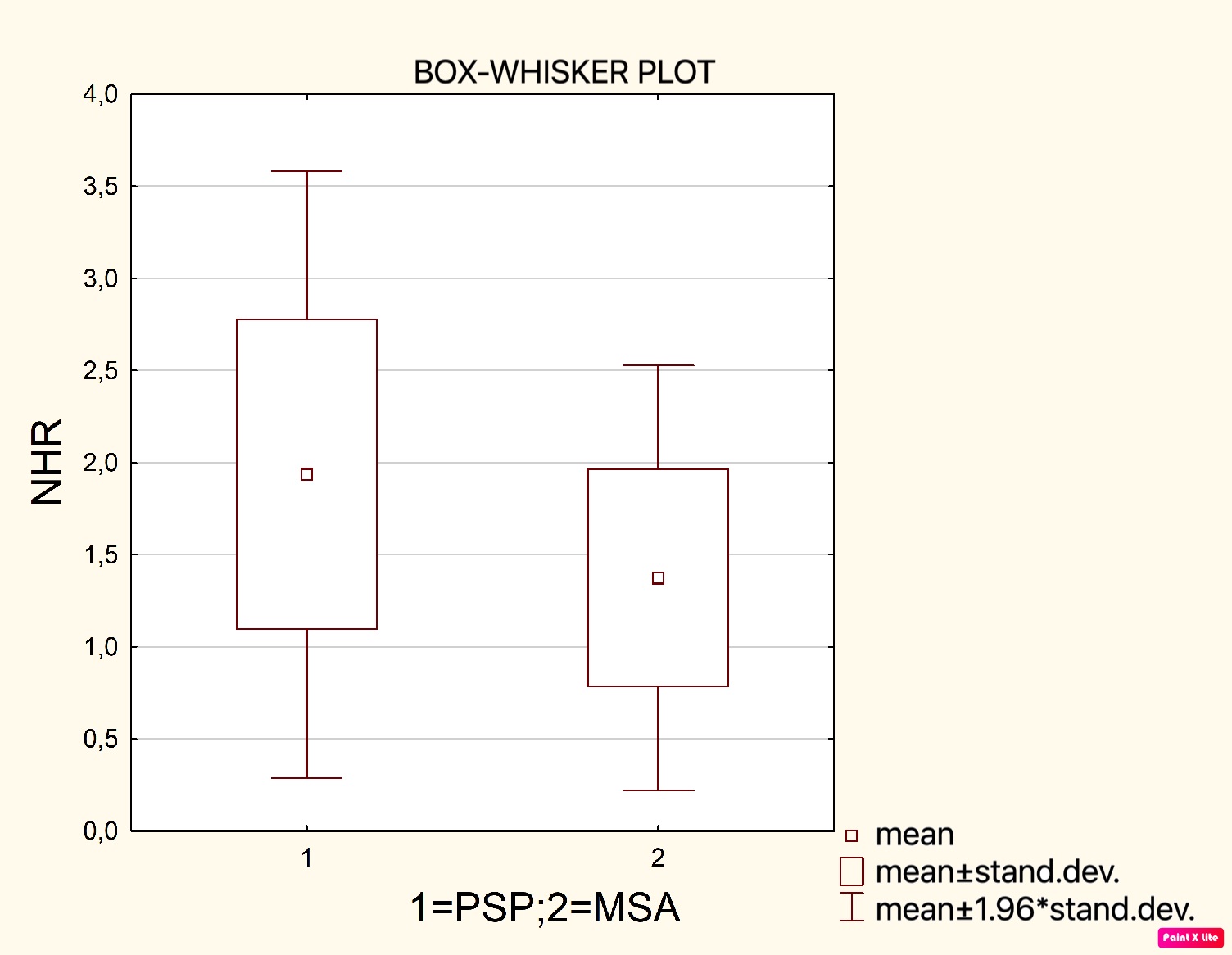Category: Parkinsonism, Atypical: PSP, CBD
Objective: Assessment of the possible differences in peripheral inflammation severity between progressive supranuclear palsy (PSP) and multiple system atrophy (MSA) with the use of three parameters: neutrophil-to-lymphocyte ratio (NLR), platelet-to-lymphocyte ratio (PLR) and neutrophil-to-high-density lipoprotein-cholesterol ratio (NHR).
Background: PSP and MSA are described as atypical parkinsonian syndromes (APS). Current literature discusses possible role of inflammatory process in APS pathogenesis. The authors hypothesize, that inflammation is an important factor in neurodegeneration and inflammatory patterns differ between respective clinical entities. NLR, PLR and NHR are non-specific parameters evaluating severity of peripheral inflammation. To the best of our knowledge, this is the first study to evaluate NLR, PLR and NHR in the context of APS.
Method: 24 patients with PSP and 30 patients with MSA were included. All diagnoses were made according to current clinical criteria. In all cases disease duration varied from 3 to 6 years. For all study participants blood morphology and lipid profile were evaluated. Patients with active inflammatory process due to any reason (infection, trauma, neoplasm etc.) or known history of lipid metabolism changes (dyslipidemia, use of medications affecting lipid profile etc.) were excluded.
Statistical analysis was performed using Statistica software (version 13.1 Dell. Inc. Statsoft). Data distribution from analyzed groups of patients (PSP and MSA patients) was assessed with Shapiro-Wilk test. Due to normal distribution of NLR, PLR and NHR all parameters are expressed as means, minimal, maximal, SD and 95% confidence interval values. For group comparison we have used Student t test. Significant results are presented as box plots. For all calculations p-value of 0.05 was considered significant.
Results: In table 1 are presented descriptive statistics of analyzed inflammatory parameters. Only mean values of NHR were statistical different between PSP and MSA patients and higher in first group 1.94 in relation to second 1.37, p=0.0074, figure 1.
Conclusion: Peripheral inflammatory patterns differ between PSP and MSA, what could be used to facilitate differential diagnosis. Further research in this area is required.
Table 1. Statistics
Figure 2. NHR comparison
To cite this abstract in AMA style:
N. Madetko-Alster, B. Migda, P. Chunowski, P. Alster. Peripheral inflammation severity in differential diagnosis of progressive supranuclear palsy and multiple system atrophy – usefulness of neutrophil-to-lymphocyte ratio, platelet-to-lymphocyte ratio and neutrophil-to-high-density lipoprotein-cholesterol ratio [abstract]. Mov Disord. 2024; 39 (suppl 1). https://www.mdsabstracts.org/abstract/peripheral-inflammation-severity-in-differential-diagnosis-of-progressive-supranuclear-palsy-and-multiple-system-atrophy-usefulness-of-neutrophil-to-lymphocyte-ratio-platelet-to-lymphocyte/. Accessed December 26, 2025.« Back to 2024 International Congress
MDS Abstracts - https://www.mdsabstracts.org/abstract/peripheral-inflammation-severity-in-differential-diagnosis-of-progressive-supranuclear-palsy-and-multiple-system-atrophy-usefulness-of-neutrophil-to-lymphocyte-ratio-platelet-to-lymphocyte/


